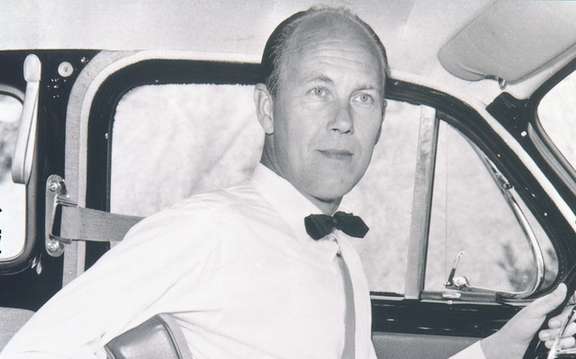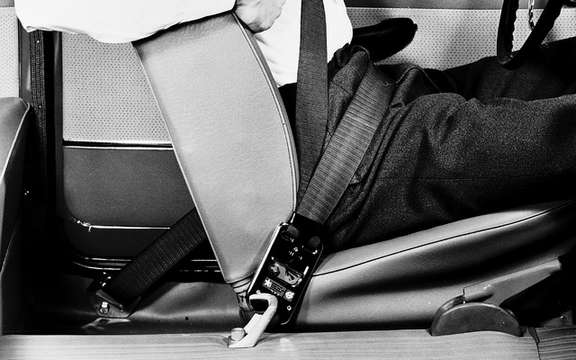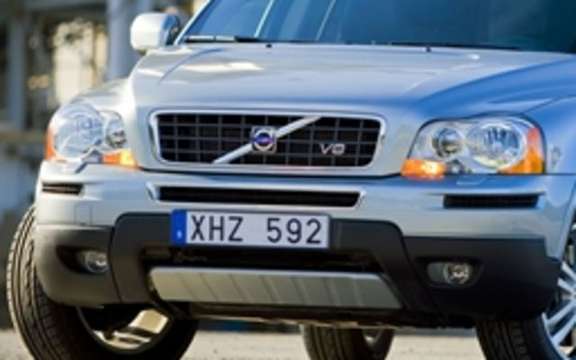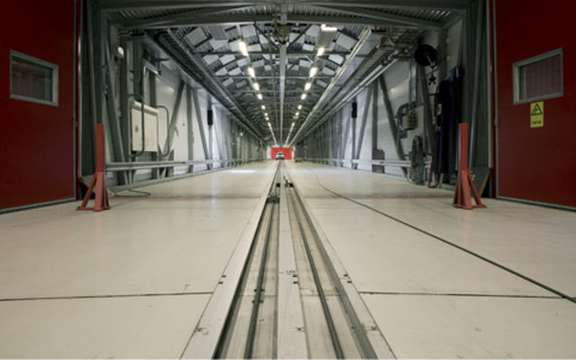The seatbelt Volvo's three-point turns 50
On 13 August 1959, the very first car in the world equipped with a series of seat belt attachment has three-point - a Volvo PV544, was delivered to a Volvo dealer in the town of Kristianstad, Sweden. In the 50 years that followed, the safety belt in V fixing three points saved over a million lives.
Unroll, stretch, strengthen and click. A simple movement of the hand and the belt is in place and by the same token it reduces more than 50% the risk of serious injury or fatality in a collision. To date, the seatbelt has three-point fixation remains the most important feature of a security vehicle. This is the innovation of safety the most important and the most universally used 120 years of automotive history.
This is the belt that holds the occupants of the vehicle in case of impact. The occupants are held in their seat and are not likely to be launched inside the cabin or thrown out of the vehicle in the collision complex scenarios.
Nils Bohlin understood the forces involved
It's the late 1950s that the seatbelt has evolved into its current configuration, thanks to Volvo engineer Nils Bohlin's. Yet, the industry offered various other types of seat belts before innovation Bohlin. For example, in the 1930s, the American doctors had begun to exert pressure so that vehicles are equipped with seat belts.
The lap belt fixing two points was the most widespread, but there were also other variants of the safety belt has three fixing points. The problem was they did not adequately and effectively protected users, specially at high speed. As a former aviation engineer whose work has included the development of catapult seats, Nils Bohlin understood the force generated by a collision.
The same principles remain today
The belt must absorb the force in the right place: a height pelvis and chest, or the body is stronger. On the other hand, it must be easy to use and adjust. The most important properties of the design Bohlin were that the system consisted of a lap belt and a shoulder belt, the straps were anchored at a low attachment point, close to the seat, the seat belt geometry formed a "V" whose tip was directed toward the floor, and that the belt stayed in position and did not move under load.
The same principles apply today.
On Nordic walking, Volvo PV544 and Volvo 120 (called Amazon in Europe) were the first vehicles to present this innovation. Volvo was thus the first carmaker to equip its vehicles with a seatbelt attachment has three-point equipment series. The company filed a patent application on open technology, ensuring that all could use this free design. A step to ensure the giant automobile safety had just been taken, but the seat belt was fixing three points was not immediately adopted a universal scale. It took some years before customers and the rest of the automotive industry do not realize the effectiveness of the seat belt mounting a three-point save lives.
The study of Volvo convinced the world
In 1963, Volvo has launched a seatbelt has three fixing points in the United States and other global markets. Before the launch, the company conducts crash tests of vehicles equipped with various types of seat belts. The results were clear as day: the safety belt Volvo's three-point provided the best protection to the occupants, and by a considerable margin. Some years later, in 1967, Volvo presented its "Report of 28,000 accidents" at a conference on automotive security held in the United States. The report was based on data collected on collisions involving Volvo vehicles in Sweden over a period of one year. The effectiveness of the safety belt has three-point fixation was again demonstrated undeniable way, and the world began to realize that the seatbelt had saved lives and reduced injuries by a margin of 50 to 60%.
More than one million lives saved
Today, the seatbelt has three-point fixation is installed in the vehicles around the world and Volvo vehicles have been equipped with this system as standard equipment, both front seats as rear seats since 1967. The modern safety belt is the cornerstone of automotive interior systems security, working in conjunction with the airbags, belt pretensioners and force limiters to reduce the likelihood of injury to occupants. Pretensioners and force limiters properly position the belt in an impact, tightening the belt across the chest, then freeing a determined amount of tension that the body can be retained as delicately as possible. Both systems engage in a few thousandths of a second.
It is difficult to give the exact number of lives that were saved by seat belts because there is no globally coordinates statistics on road safety. However, after internal and external statistical studies of selected countries, Volvo Car Corporation believes more than a million people owe their lives to the safety belt, and a much larger number of people have avoided injury serious.
A considerable potential remains
The use of the safety belt remains the most important factor to increase road safety for the occupants of the vehicles and a global perspective, a vast potential for improvement remains. The use of seat belts varies considerably in different parts of the world and whenever the population of a country increases by one percent use the belt, it makes a considerable difference to the number of lives saved.
In the United States, the National Highway Traffic Safety Administration estimates that each percentage increase in belt use would save 270 lives per year. The studies of the Global Road Safety Partnership in Europe suggest that 7,000 lives would be saved if every country in the EU had the same usage statistics that the best performing countries. The potential is even greater in the regions of Africa, Asia and South America or the number of vehicles is increasing very rapidly.
View the gallery











